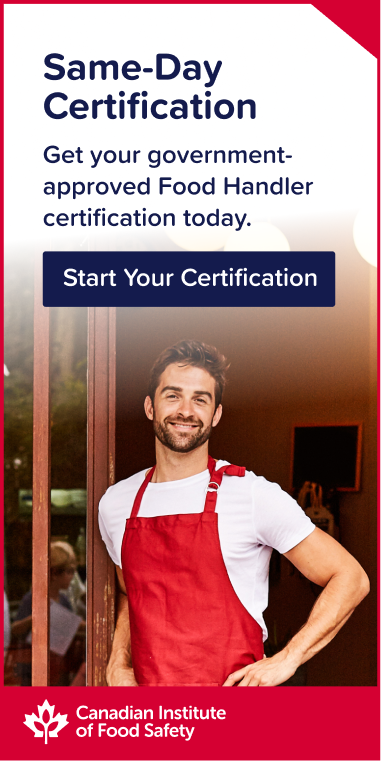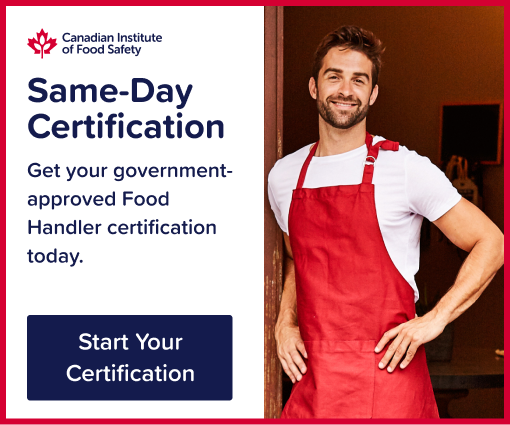
As of July 20, 2022, Health Canada has introduced new requirements for packaged foods that contain high levels of sugars, sodium and saturated fat. The new regulations require a front-of-package label with the symbol of a magnifying glass and a call-out that the food in question is high in a particular nutrient. The intention of the new labelling is to visually cue consumers and capture their attention, enabling them to make better-informed decisions about what they eat.
Foods that require the new labelling include:
- Packaged foods that contain or exceed 15% of the daily value of sugars, sodium or saturated fats. Examples include deli meats, frozen desserts and soups.
- Prepackaged foods with a reference amount less than or equal to 30 grams that contain 15% or more of the daily value in sugars, sodium or saturated fats. Examples include salad dressing, cookies or breakfast cereals.
- Prepackaged main dishes with a reference amount of or above 200 grams and containing 30% or higher of the daily value of one of the nutrients. Examples include frozen pizzas or lasagnas.
There are some foods that are exempt from this new rule due to reasons such as overall nutritional contribution or health benefit. Some examples include:
- Eggs
- Whole or cut vegetables and fruits that could be frozen, fresh, dried or canned that do not have added salt, sugar or saturated fats
- Sources of good/healthier fats such as nuts, fatty fish and vegetable oils
- Plain yogurt and cheese (both are considered important sources of calcium)
There are also exemptions due to technical reasons. These include:
- Cream or milk sold in refillable glass containers
- Single-ingredient, raw whole cuts of poultry, fish and meat that do not carry a nutrition facts table
- packaged individual portions that are only intended to be served by a restaurant or other commercial enterprise to accompany meals or snacks (for example, individually portioned crackers served with soup or creamers served with a cup of coffee)
- foods in very small packages
Proper food labelling is a critical component of food safety and compliance and is a key component of consumer information and education for food choices. While these new requirements take effect now, food companies will have until January 1, 2026 to comply. If you own or operate a food business, visit the Government of Canada to learn more about these regulations and ensure you take the necessary steps for compliance.
Frequently Asked Questions
How will these new labelling requirements impact small food producers and their products?
The new labelling requirements are likely to impact small food producers in the following ways:
- Cost Implications: The need for redesigned packaging to include the new labels could result in additional costs for design, printing and possibly new packaging materials. Small producers often operate with tighter budgets and lower economies of scale, so these costs could be significant relative to their overall revenue.
- Regulatory Compliance: Small producers will need to invest time and resources to understand and implement the new requirements correctly. This could involve consultations with legal or food labelling specialists to ensure compliance, adding further to their costs.
- Market Positioning: While the label aims to inform consumers about high levels of sugars, sodium and fats, it could also deter customers from purchasing products that carry this label. Small food producers might need to reformulate products to avoid potentially negative consumer perceptions associated with these labels.
- Educational Resources and Support: Depending on the resources provided by regulatory bodies or industry associations, small producers might receive guidance and support to transition to the new requirements, which could mitigate some challenges.
Are there any exceptions for certain types of foods or packaging sizes under the new regulations?
Yes, there are exceptions to the new front-of-package nutrition label requirements under certain conditions:
- Type of Food: Certain foods that are considered beneficial despite high levels of sugars, sodium or saturated fats are exempt. For example, whole and cut fruits and vegetables (unless they have added sugars, sodium or fats), milk, eggsor and certain types of cheeses that are high in essential nutrients like calcium.
- Packaging Size: Small packages with limited surface area for labelling may be exempt from these requirements. This exemption is designed to avoid impractical labelling on very small products where the label would not reasonably fit.
- Single-Ingredient Foods: Foods that consist of a single ingredient, such as raw whole cuts of meat, poultry or fish, which typically do not require a Nutrition Facts table, are also exempt from these labelling requirements.
These exemptions are intended to prevent unnecessary labelling that could either clutter small packages or discourage the consumption of inherently nutritious foods.
What are the penalties or consequences for non-compliance with the new front-of-package labelling requirements?
The Canadian Food Inspection Agency (CFIA) will begin enforcing compliance on December 15 2023. Non-compliance could result in penalties, although the initial focus of the CFIA will be on education and the prompt correction of issues.
For more detailed information, you can visit the Health Canada and CFIA websites to stay updated on the enforcement details and any updates to the compliance strategies.




